Personal debt in Scotland. Research from the UK's leading debt charity.
We advised over 1,400 clients per month in 2016. Using this client data, Scotland in the Red highlights the issues and key statistics relating to debt in Scotland. The report gives insight into Scottish debt statistics gaining an insight into trends and the financial difficulties faced by clients north of the border.
Just under 17,000 people contacted us for debt advice in 2016. 8,287 clients called the charity for help while 8,568 used our online help tool, Debt Remedy.
1. Personal debt levels in Scotland are rising
The average debt of clients in Scotland increased in 2016, in a reversal of recent trends. In 2015, average debts were £12,256, but in 2016 that rose to £12,677. This trend was mirrored across the whole of the United Kingdom.
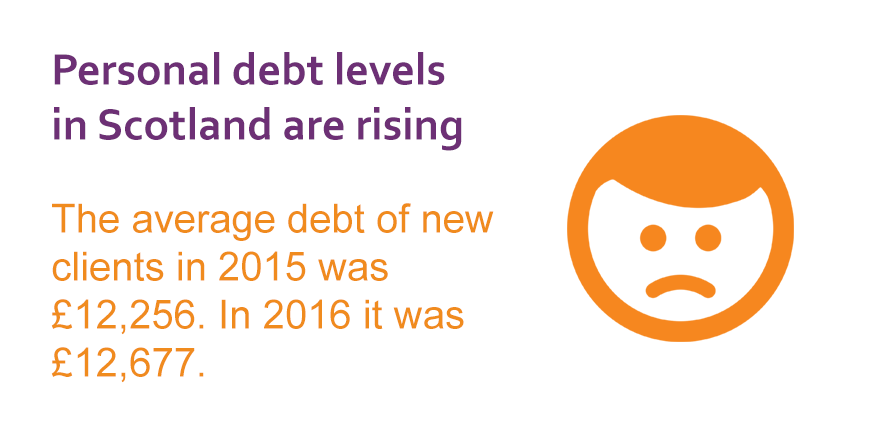
2. People have less disposable income than 5 years ago
Between 2012 and 2016, the average wages of clients in Scotland increased by 8%, with a sharp jump in 2016. However, because essential living costs have risen faster than income, the average client budget surplus has fallen from £20 in 2012 to just £7 in 2016.
The cost of living is predicted to rise faster than income growth over the next few years, this means that more people are likely to fall into debt.
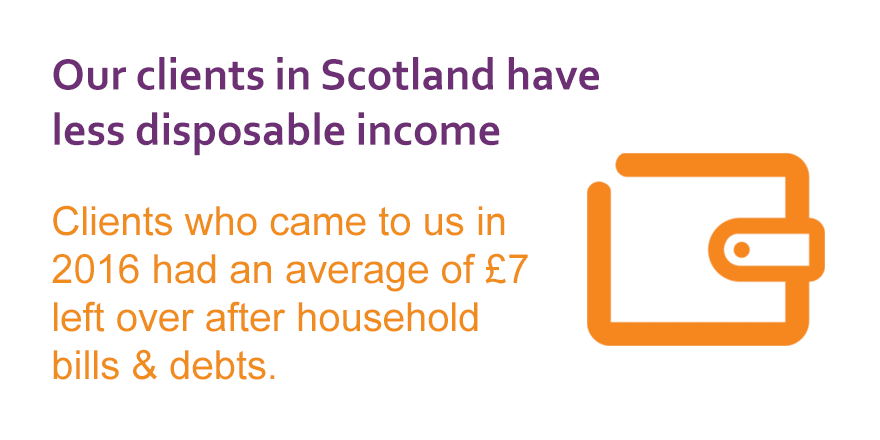
3. 1 in 4 clients are now behind on their household bills
The proportion of clients with arrears in key household bills - rent, electricity, gas and council tax – has risen from one in five to one in four, while the average arrears on household bills has increased by £398 between 2012 and 2016.
The average amount owed on rent arrears has increased 23% between 2012 and 2016 while the amount owed on electricity and gas arrears has risen by 34% and 31% respectively.
Though the proportion of clients with mortgage arrears has decreased, the average amount of mortgage arrears has increased by 49% in the same period.
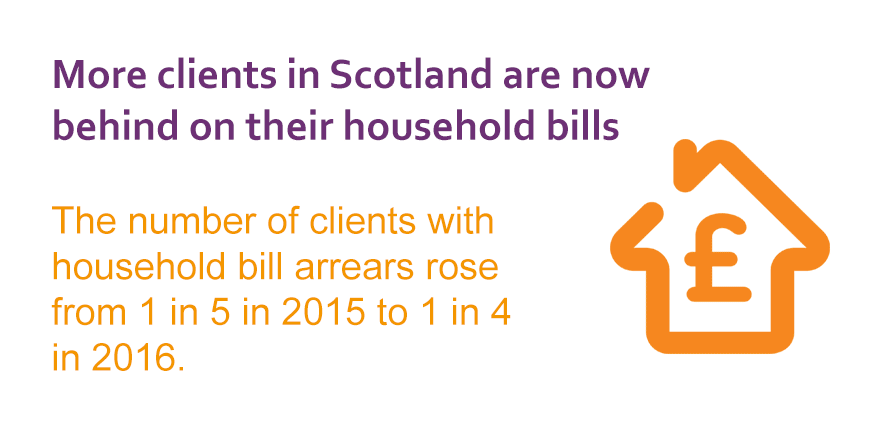
4. Council tax arrears are becoming a huge problem
Of all the key household arrears, the greatest problem among council tax paying clients is council tax arrears. In 2012 27% of these clients were in arrears; by 2016 this figure had increased to 40%.
This has happened despite a 10-year freeze on council tax bills in Scotland. The average council tax arrears owed by clients has also increased from £1,338 in 2012 to £1,731 in 2016, an increase of 29%.
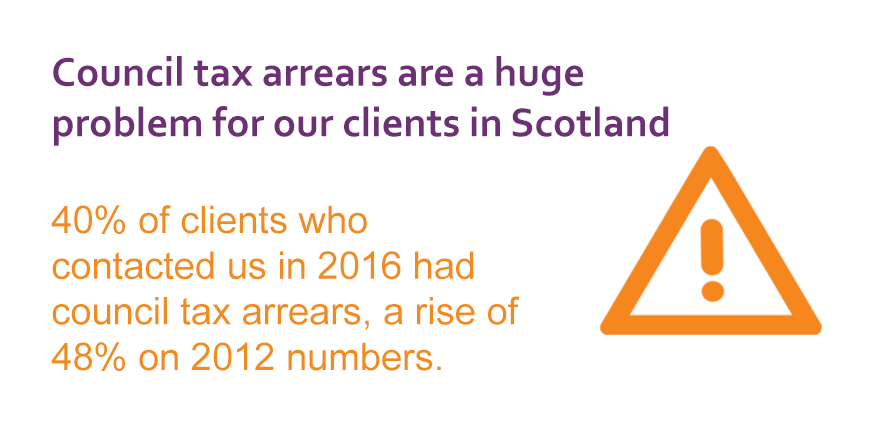
5. More clients are living in rented accommodation than ever before
The proportion of the charity's clients living in rented accommodation has increased from 44% of all clients in 2012 to 56% in 2016. Private rented sector clients now represent almost a quarter of clients, compared with less than a fifth in 2012.
Meanwhile, the proportion of clients with a mortgage has shrunk from 42% to 29% over the same period.
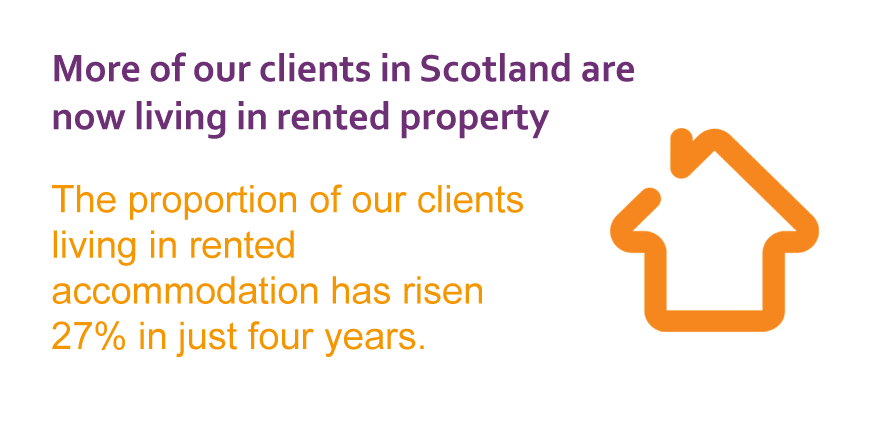
Download the report now to see our full research and recommendations.
Download now